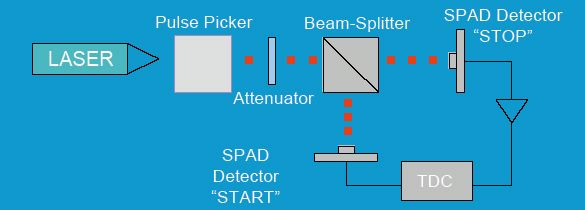Go to
November 2, 2005
Fluorescence Lifetime Imaging based on CMOS Single Photon Avalanche Diode Technology
Marek Gersbach, PhD Assistant at EPFL-IC-LAP
Abstract: In recent times, new microscopy methods for the detection of dynamic processes in and around living cells have received increasing attention from the academic world. The desire to capture microsecond or nanosecond cellular changes and interactions has led to the development of increasingly sophisticated imaging technologies.
One promising method for tracking these cellular interactions is Fluorescence Lifetime Imaging (FLIM). Measuring the lifetime of fluorophores gives valuable information on the cellular environment, such as changes in pH or ion concentration. Compared to other fluorescence based imaging techniques, FLIM has the advantage to be unaffected by changes in probe concentration and/or excitation intensity. One challenge facing FLIM is the need for more sensitive and faster detectors, allowing high frame rates and very precise fluorescence lifetime decay measurements, typically in the picosecond range.

Single Photon Avalanche Diode (SPAD) based detectors are a very promising candidate for this application. The use of such detectors could allow much higher frame rates, in the order of several kHz, while keeping a very good signal-to-noise ratio and high timing resolution. In this talk we will present the intended bio-imaging experiments and the envisioned opto-electrical system based on SPAD based detectors.
About the speaker: Marek Gersbach was born in Durham, North Carolina, USA in 1982. During his studies at EPFL he spent a year in Stockholm (KTH) as an exchange student. He received his Masters Degree in Microsystems Technology from EPFL in April 2005. The title of his master thesis was "Magnetic Resonance Imaging using Microfabricated Planar Coils".
Marek is now a PhD Assistant at the Processor Architecture Laboratory (LAP) as of September 1, 2005. He is working on Fluorescence Lifetime Imaging using Single Photon Avalanche Diode Detectors (SPAD`s).
Download visuals (4.2 MB pdf)
Secondary navigation
- January 29, 2018
- August 30, 2017
- Past seminars
- 2016 - 2017 Seminars
- 2015 - 2016 Seminars
- 2014 - 2015 Seminars
- 2013 - 2014 Seminars
- 2012 - 2013 Seminars
- 2011 - 2012 Seminars
- 2010 - 2011 Seminars
- 2009 - 2010 Seminars
- 2008 - 2009 Seminars
- 2007 - 2008 Seminars
- 2006 - 2007 Seminars
- August 31, 2007
- June 29, 2007
- June 20, 2007
- June 5, 2007
- May 30, 2007
- May 16, 2007
- May 15, 2007
- April 24, 2007
- March 27, 2007
- March 14, 2007
- February 9, 2007
- February 8, 2007
- January 12, 2007
- December 5, 2006
- November 14, 2006
- October 31, 2006
- October 27, 2006
- October 26, 2006
- October 20, 2006
- September 20, 2006
- September 20, 2006
- September 20, 2006
- September 19, 2006
- 2005 - 2006 Seminars
- August 23, 2006
- August 22, 2006
- June 26, 2006
- June 20, 2006
- June 16, 2006
- June 7, 2006
- June 6, 2006
- May 30, 2006
- May 17, 2006
- May 10, 2006
- April 27, 2006
- April 12, 2006
- March 31, 2006
- March 29, 2006
- March 22, 2006
- March 15, 2006
- February 27, 2006
- February 8, 2006
- January 25, 2006
- January 19, 2006
- January 18, 2006
- January 17, 2006
- January 11, 2006
- November 30, 2005
- November 23, 2005
- November 2, 2005
- October 26, 2005
- October 25, 2005
- October 5, 2005
- September 28, 2005
- 2005 Seminars

